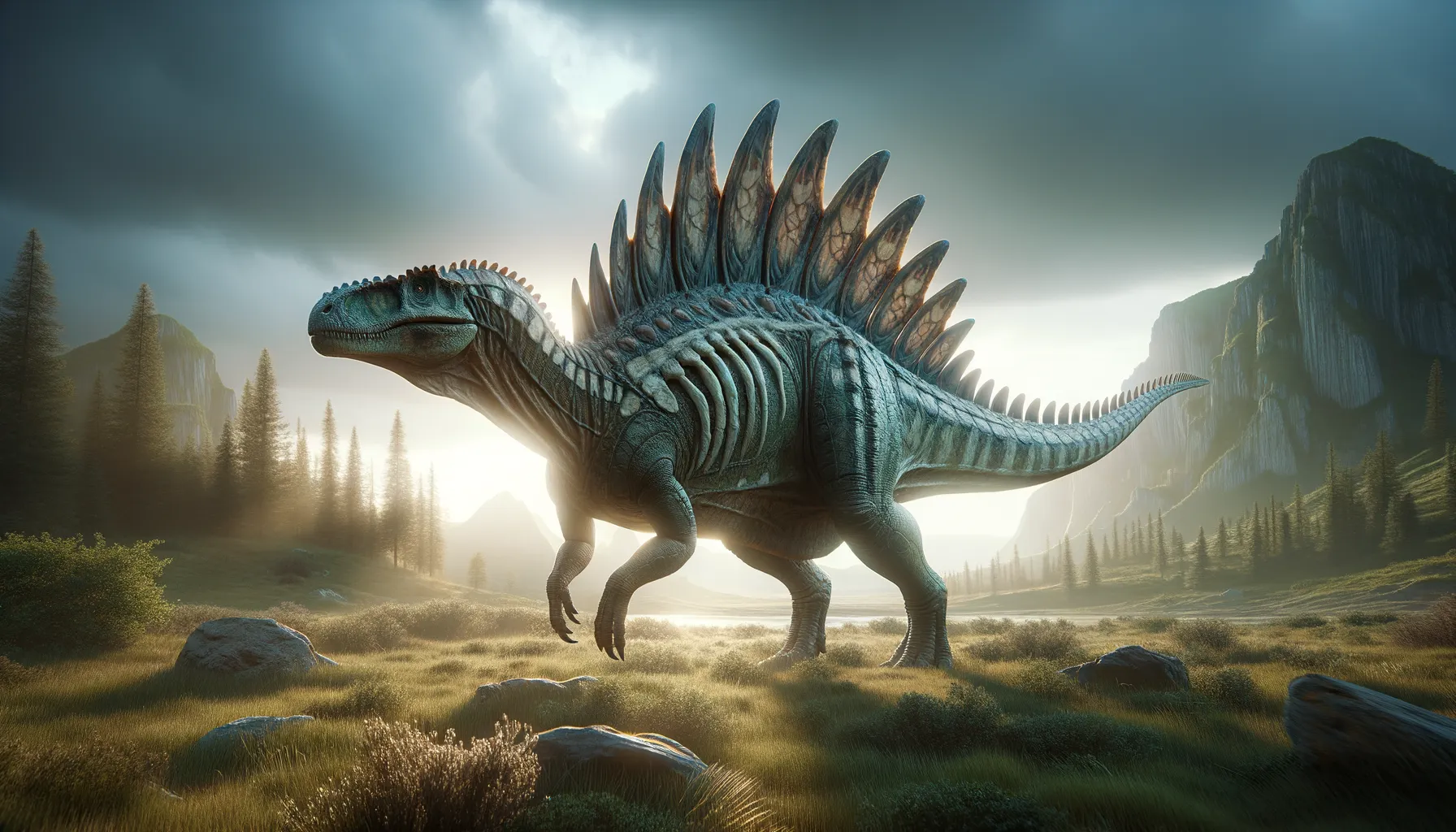
Animantarx
A fortress on four legs in the ancient wild.
Period
Cretaceous
Length
Roughly 3 meters long.
Height
Around 1.5 meters at the hips.
Weight
Approximately 1 metric ton.
Animantarx was an armored dinosaur that roamed North America during the Cretaceous period. Known for its protective bony plates covering its back, it was built more for defense than speed. While not as large as some of its contemporaries, it played a crucial role in its ecosystem. The discovery of Animantarx helped scientists learn more about the variations in ankylosaur armor and their adaptations to their environment.
Diet
Animantarx was a herbivore, primarily feeding on low-lying plants. Its diet likely included ferns, gymnosperms, and other soft vegetation that was abundant in its habitat.
Hunting
As a herbivore, Animantarx did not hunt. Instead, it spent its time foraging for plants and using its keen sense of smell to locate food sources.
Environmental challenges
Animantarx faced numerous predators, which made its defensive armor crucial for survival. The changing climate and flora of the Cretaceous presented challenges in sourcing food. Additionally, competition for resources with other herbivores would have been a significant challenge.
Speed
Slow-moving, primarily defense-focused.
Lifespan
Estimated around 20 to 30 years.
First discovery
Discovered in Utah in 1999.
Fun Facts
- Animantarx was a plant-eating dinosaur that lived during the Late Cretaceous period, around 106 million years ago.
- Its name, Animantarx, means 'living fortress' due to its armored body which provided strong protection against predators.
- It was a relatively small dinosaur, estimated to be about 10 feet long and built like a tank with thick, bony armor along its back.
- Animantarx is known from fossils found in Utah, USA, where it shared its habitat with other dinosaurs like the massive sauropods.
- The dinosaur's spiky, armored body likely helped it survive in a world filled with fierce carnivorous predators.
- Animantarx belonged to a group of dinosaurs known as nodosaurids, which were similar to the more famous ankylosaurids but lacked a tail club.
Growth and Development
Young Animantarx would have been vulnerable and heavily reliant on their armor for protection once developed. Growth would have been gradual, with a focus on developing their bony plates. As they matured, they became more adept at foraging and moving through their environment.
Habitat
Animantarx inhabited forests and floodplains that provided plenty of vegetation for grazing. The dense foliage offered shelter from predators and harsh weather conditions. Wetlands in these regions were key to their survival, as they provided both food and water.
Interaction with other species
Animantarx likely lived in solitude or small groups, interacting with other species only when feeding or in defense. They shared their environment with other herbivores and predators, often relying on their armor for protection. Competition with other herbivores for resources would have been a constant interaction.
Natural lifespan
The natural lifespan of Animantarx was about 20 to 30 years.
Reproduction
Animantarx likely laid eggs, with nesting areas chosen carefully to protect the young. The reproductive cycle would have mirrored other ankylosaurs, with a focus on protecting the eggs and young from predators. Parenting behavior is speculative, but the armor would have been crucial from a young age.
Social behaviour
Typically solitary or in small groups, Animantarx focused on survival through careful foraging and defense. Social interactions may have included basic communication signals to other members of their species. The defensive nature of their armor implies a lifestyle more focused on self-preservation than social hierarchy.
Fossil locations
Animantarx fossils were first discovered in the Cedar Mountain Formation in Utah. This region has been rich in dinosaur discoveries, contributing significantly to the understanding of Cretaceous fauna. The find in Utah has helped paleontologists fill in gaps about ankylosaurs in this part of North America.
